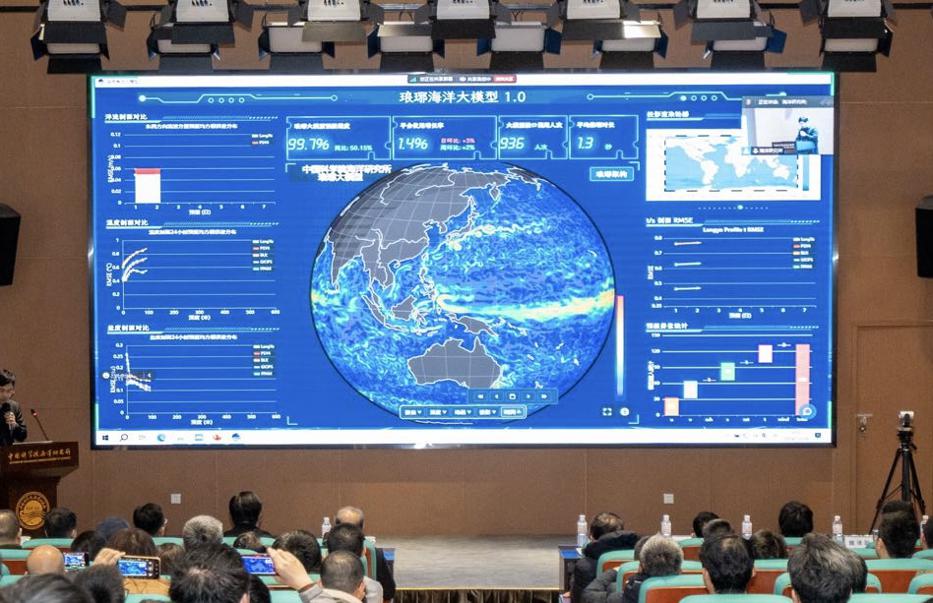By Zhao Ruixue in Ji'nan | chinadaily.com.cn

The "LangYa", a state-of-the-art artificial intelligence model designed for high-resolution global ocean prediction was unveiled during the 2024 Ocean AI Large Model LangYa Forum, held in Qingdao, Shandong province. [Photo by Wang Min/for chinadaily.com.cn]
Chinese marine scientists on Saturday unveiled "LangYa", a state-of-the-art artificial intelligence model designed for high-resolution global ocean prediction, marking a significant advancement in forecasting extreme weather events and ocean-related disasters, experts said.
Developed by a research team from the Institute of Oceanology, Chinese Academy of Sciences, based in Qingdao, Shandong province, LangYa integrates advanced AI algorithms with specialized oceanographic knowledge.
The model's name, "LangYa", is derived from Cihai, the encyclopedia of the Chinese language. It represents a precious treasure characterized by fine texture, crystal clarity and jade-like qualities—symbolizing the model's exceptional value and precision.
"The LangYa, currently in its 1.0 version, delivers highly accurate short- to medium-term forecasts of global ocean state variables, including temperature, salinity and ocean currents, for periods ranging from one to seven days. This significantly enhances the accuracy and reliability of global ocean predictions," said Wang Fan, the institute's director.
"The LangYa series of large-scale models will continue to evolve in applications. The upcoming 2.0 version will incorporate forecasts for marine phenomena such as typhoons, precipitation, ocean waves and sea ice, further enhancing its capability to predict complex oceanic events and disasters," Wang said.
This advancement will provide stronger support for marine environmental security, global climate change adaptation, ocean resource development and disaster prevention and mitigation, he added.
The LangYa was unveiled during the 2024 Ocean AI Large Model LangYa Forum, held in Qingdao. The event brought together over 100 experts from more than 30 research institutes, universities and enterprises across China. Participants engaged in in-depth discussions on the development and application of large-scale ocean models. (ChinaDaily)

